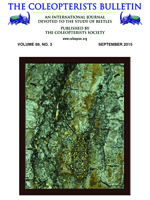When attempting to understand a species' distribution, knowing how many collections should be surveyed to achieve an adequate sample (exhaustiveness) is important. A test for exhaustiveness using species distribution models created with Diva-GIS was performed on county level locality information recorded from more than 4,900 specimens of Thoracophorus costalis Erichson (Staphylinidae: Osoriinae) borrowed from 38 collections. Size and location of distribution models based on specimens from single collections varied greatly, indicating “collection bias.” At least 15 collections needed to be combined before the resultant model averaged 90% of the area of a reference model created from all available specimens. By themselves, alternative distribution data from literature, Bugguide.net, and GBIF.org performed poorly, resulting in models with less than 15% the area of the reference model. Comments on the use of online data, the importance of maintaining and growing regional collections, and the future of natural history collections are included.
How to translate text using browser tools
18 September 2015
“Collection Bias” and the Importance of Natural History Collections in Species Habitat Modeling: A Case Study Using Thoracophorus costalis Erichson (Coleoptera: Staphylinidae: Osoriinae), with a Critique of GBIF.org
Michael L. Ferro,
Andrew J. Flick
ACCESS THE FULL ARTICLE

The Coleopterists Bulletin
Vol. 69 • No. 3
September 2015
Vol. 69 • No. 3
September 2015
biogeography
furrowed rove beetle
gamma distributions
landscape ecology
niche modeling
predictive modeling
rove beetles




